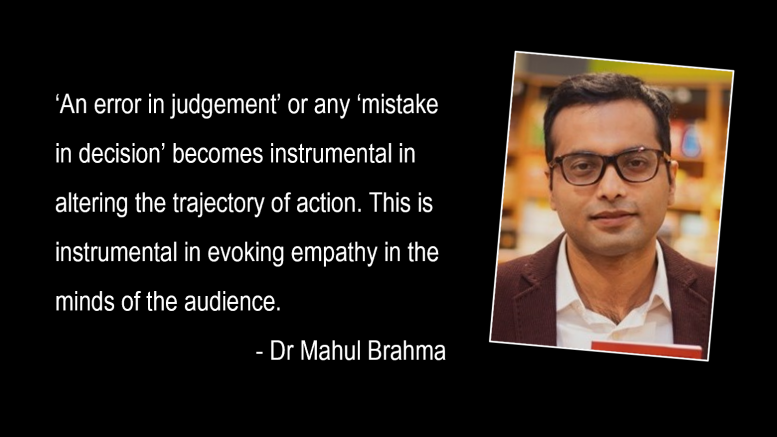You’re never going to kill storytelling because it’s built into the human plan. We come with it.
– Margaret Atwood
‘Storytelling’ constitutes an intrinsic and indispensable part of public speaking and that in turns goes on to form one of the most significant attributes of being a ‘leader’. It has always been found that greatest leaders have been unanimously effective storytellers, be in politics, education, public affairs or management. The question then arises how to re-shape and re-calibrate a certain sequence of events to make a compelling story– inspiring, motivating, humorous, satirical, full of apprehensions, and many more emotions. It naturally involves a re-arrangement of details to deliberate on some events and to evoke different emotions in the listeners. It also involves an intelligent amalgamation as well as enactment of strategies that do involve elements of imagination, visuals, rhetoric, voice and narration. Moreover, it includes a careful depiction of the details of events and emotions in the minds of listeners.
Aristotle’s classical rhetoric of communication or rather persuasion provides the fundamental platform for leadership storytelling, especially when it comes to public speaking. The three pillars being:
- Ethos— the characteristic which makes the speaker credible in front of the audience. If there is no credibility, the audience will not believe in the speaker and will not be persuaded by him/her.
- Pathos– the element which makes the speaker connect with the audience/ listeners with the aim to make them more interested in what the speaker articulates. This is the earliest evidence of the need for EQ or Emotional Quotient of a leader.
- Logos– the element which denotes logic. People believe only if they understand/ rationally find enough justification in what the speaker is trying to say. If there is no logic behind the speaker’s work or talk, they do not want to get involved.
Crisis Communication and Storytelling
There are multiple systems and processes that are placed to get an early warning of an impending crisis or even, hoping against hope, that it can be contained before it snowballs into a formidable foe. But crisis are inevitable.
The crisis story has to be told with empathy wherein the narrative needs to have six stages:
- Exposition: This covers the insertion of important background information within a story. For a leadership crisis communication, this will provide every bit of background information of the brewing crisis that can be shared by the leader at that point of time with the stakeholders.
- Rising Action: This includes the gradual movement towards the main conflict or crux of narrative—so that it covers the unspoken tensions, unresolved emotions as well as intrusion of new turns and twists. Therefore, this is a crucial stage wherein on has to keep an eye on the development of the crisis as well as the actions that are taken towards dousing the same.
- Climax: This, from the perspective of the leader, is a stage wherein the drama reaches the crescendo. The leader has a breakthrough in terms of finding the key to solving the crisis. So here the leader can take an aggressive stance in terms of communication.
- Falling Action: This includes sometimes important revelation about the next course of the events—mainly following the climax of the narrative. So what follows now is the last stage of the narrative wherein the final loose ends will be tied and commitments are to be made towards how such crisis will be surely avoided next time.
- Peripeteia: This marks the course of narrative in which there is a reversal of fortune — from ignorance to knowledge — that in turns change the pattern of the narrative. A classic case of this is the way Former CEO of Air Asia Tony Fernandes handled the disappearance of flight QZ8501, converting it into a brand building exercise that we crisis communicators always refer to.
- Resolution: This marks the closure of the narrative—which would necessarily be different from the beginning in emphasising the new knowledge acquired and thus the commitment to the stakeholders of the necessary action taken by the leader.
What is mostly missing in crisis communication narrative is something that Aristotle termed as Hamartia. This is a classic case wherein the leader has to accept his/her fault. This concept, given by Aristotle, summarises the humane element of any narrative. ‘An error in judgement’ or any ‘mistake in decision’ becomes instrumental in altering the trajectory of action. This is instrumental in evoking empathy in the minds of the audience.
All the world is indeed a stage and we mere players with our own exits and entrances…and so leaders also have to play their part in crisis storytelling to make the audience believe the narrative.
The views and opinions published here belong to the author and do not necessarily reflect the views and opinions of the publisher.



Be the first to comment on "Leadership Storytelling in Crisis Communication"